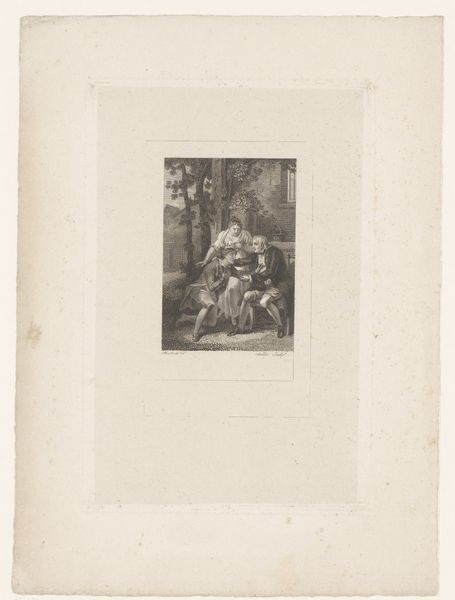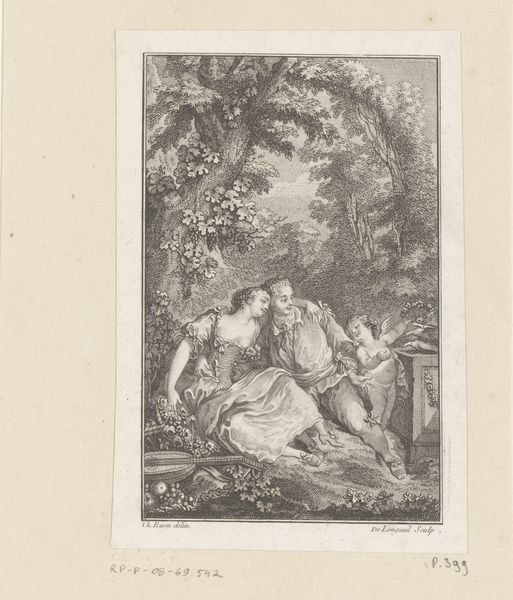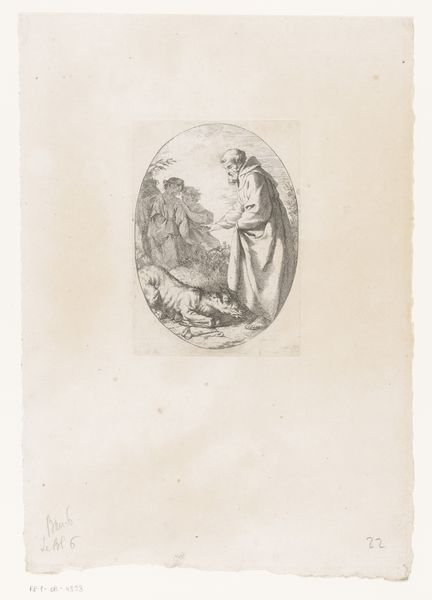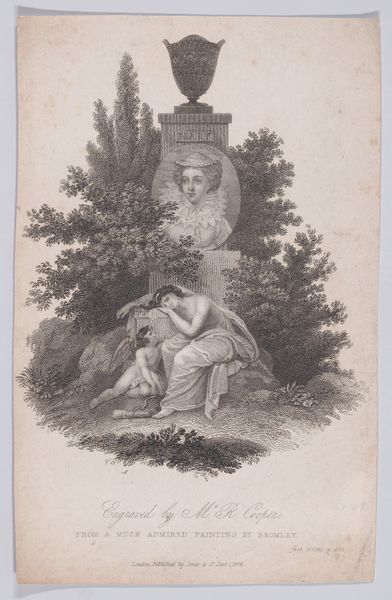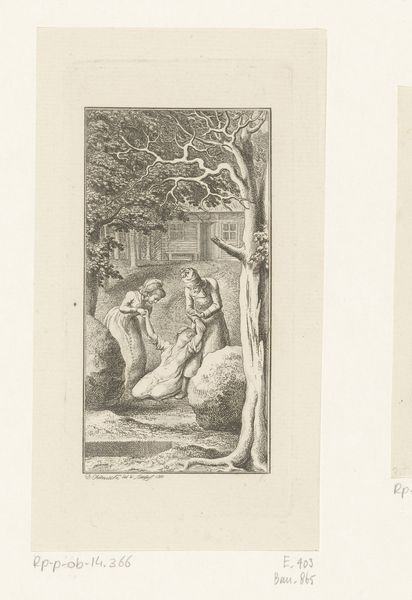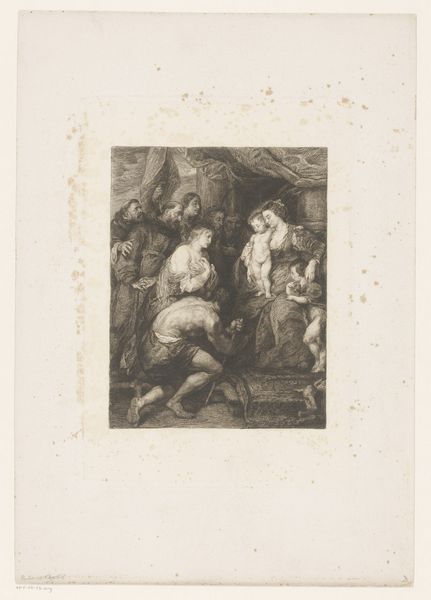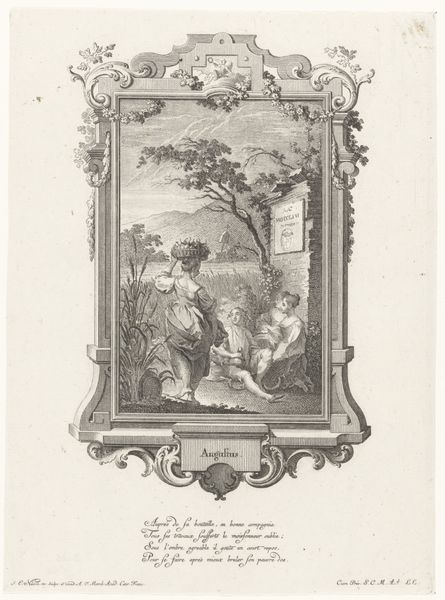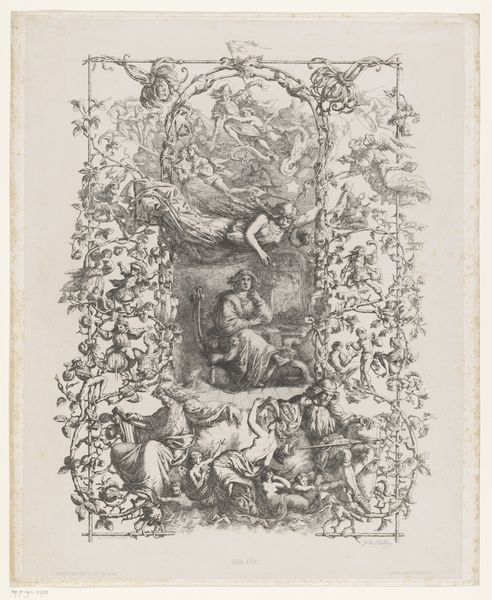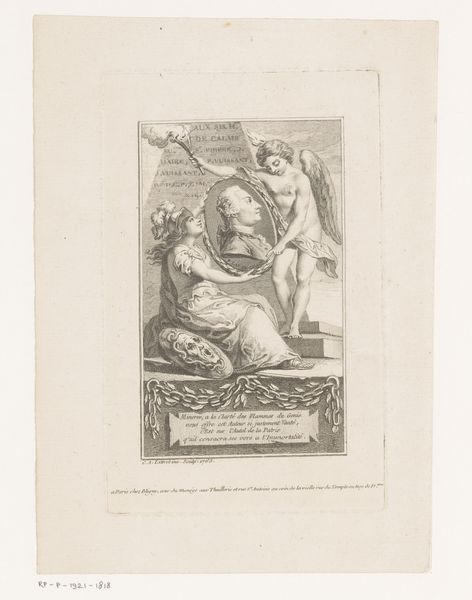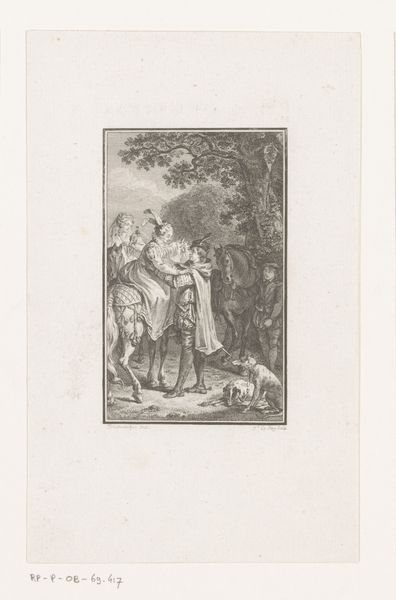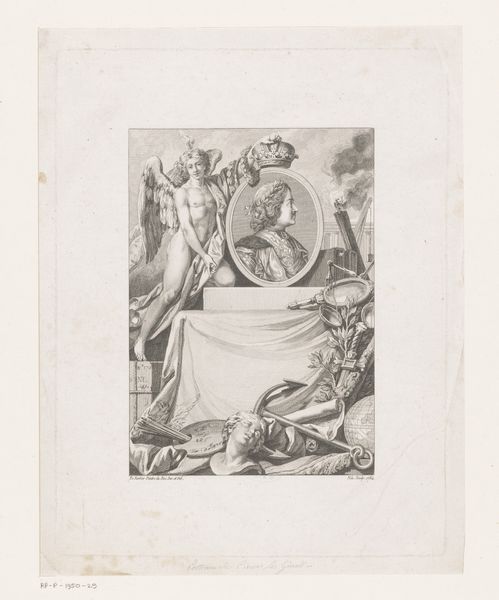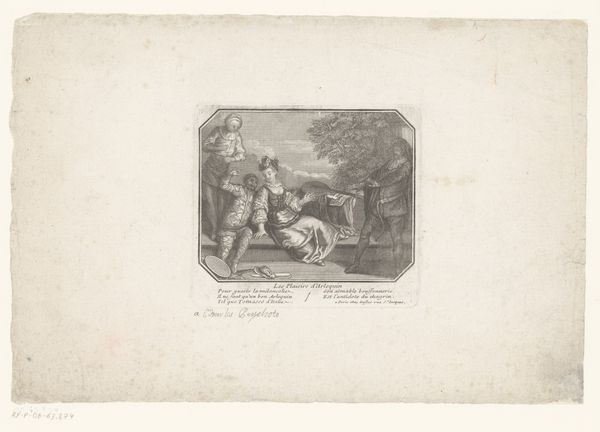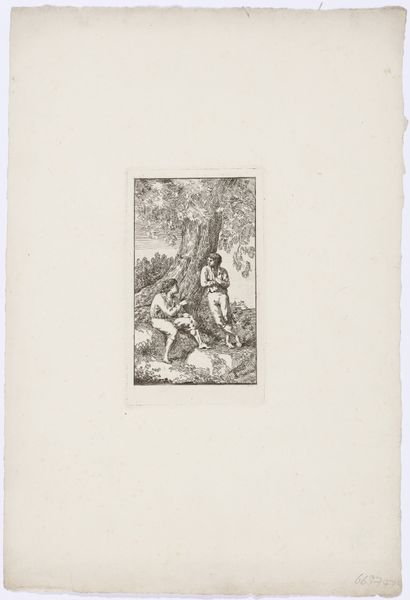
Monument met het portret van Johann Georg Sulzer 1779 - 1795
0:00
0:00
georgmichaelweissenhahn
Rijksmuseum
Dimensions: height 164 mm, width 88 mm
Copyright: Rijks Museum: Open Domain
Editor: Here we have “Monument met het portret van Johann Georg Sulzer,” an engraving on paper dating from between 1779 and 1795, currently housed at the Rijksmuseum and made by Georg Michael Weissenhahn. It features a child, roses and the portrait of what appears to be an important man. It's quite intricate, especially for such a small piece. What strikes you about this work? Curator: As a materialist, I see here a confluence of factors shaping the production and consumption of this image. Engraving itself is a labor-intensive process, indicative of a specific mode of production tied to the era's technological capabilities. How would you say that this reflects a societal desire for reproducibility and dissemination of information, or even propaganda? Editor: That's a very good point. I hadn't considered how prints allowed for the broad circulation of ideas and likenesses. The material of the print enabled it to function differently from unique artistic commodities such as paintings. Curator: Precisely! Moreover, consider the material hierarchy at play. Paper, the substrate, its availability and quality directly influence the final product. This print exists because of a complex economic and social web that made accessible both raw materials and artistic skills. Editor: So, by examining the engraving process and the accessibility of paper, we can understand more about the broader social conditions that shaped the artwork's creation and use. Did the means of producing these prints impact access to portraiture during that period? Curator: It absolutely did! Prints democratized image ownership to some degree, even as they were themselves stratified by quality and cost. The materiality isn't just passive; it's actively shaping what's communicated and who has access to that communication. Editor: This has certainly expanded my perspective. I will be looking for material processes in every artwork that I study going forward. Thanks so much. Curator: The pleasure was all mine. Always keep the means of production and circulation in mind when interpreting visual art, and you'll never look at it the same way again.
Comments
No comments
Be the first to comment and join the conversation on the ultimate creative platform.
